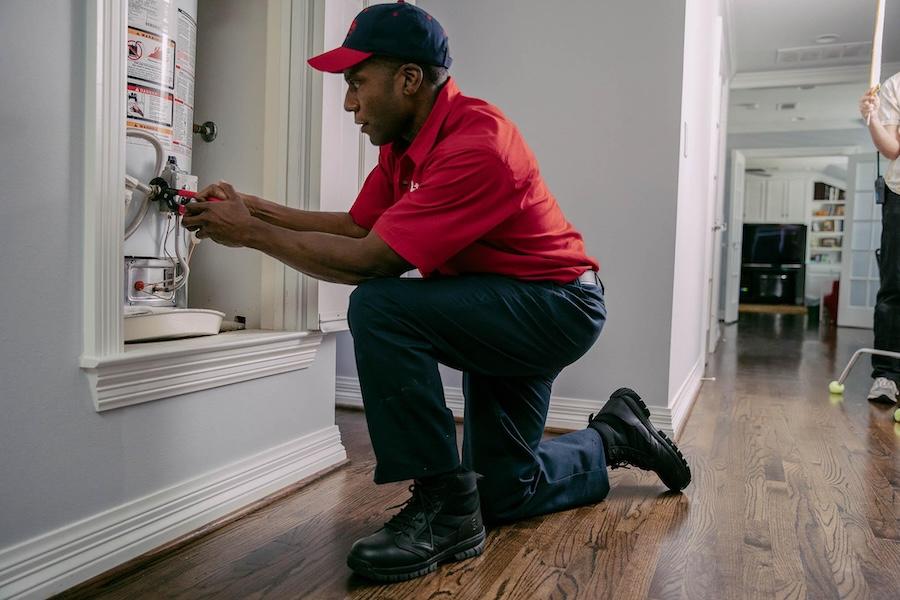Call This Tuesday to Get $50 OFF
Call us Now to Get $50 OFF.
Ratings based on 6379 reviews
Local Plumbers, Local Reviews
Call This Tuesday to Get $50 OFF
Call us Now to Get $50 OFF.
Ratings based on 6379 reviews
Local Plumbers, Local Reviews

Leaks are a common problem with older water heaters and should never be ignored. Not only are water heater leaks an inconvenience, but they can also cause extensive water damage if not addressed in a timely manner. As a homeowner, it’s important to know what to do when a water heater springs a leak. Quick action will prevent costly water damage and ensure an ample supply of hot water.
In today’s blog post, Mr. Rooter Plumbing discusses what you should do when your water heater starts leaking. As professional plumbers specializing in water heater repairs in Rialto, CA, we’ve seen it all over the years we’ve been in business. From leaks to odd noises, fluctuating temperatures, hot water tank corrosion, and broken heating elements, we’ve fixed it all.
The very first thing to do when you discover a water heater leak is to turn off the power. For an electric water heater, go to the breaker panel and turn it off. If you have a gas water heater, locate the gas valve and set it to the off position. This step is important to ensure safety when troubleshooting the appliance.
The next step is to turn off the water supply to the water heater. This is important to prevent further water from flowing into the tank, which could worsen the situation. Find the cold water line leading to the water heater and close the valve on the line. Turn the valve to the right to shut off the water. Some water heaters have handles that you need to turn 90 degrees to the closed position.
Now comes the tricky part—finding out the location of the leak. We recommend you start by checking the inlet and the outlet pipes, as these are the common sources of water heater leaks. The pipes may become loose due to general wear and tear over time. You can use a pipe wrench to tighten up the pipes to stop the leak.
Next, check the T&P valve located on the side or top of the water heater. It may be worn out or improperly seated, causing it to drip or leak. Replacing a faulty T&P valve is a pretty straightforward task that the average DIYer can handle. Use a pipe wrench to unscrew the malfunctioning valve and then screw the new one into place. Refill the tank to see if the problem is resolved.
If the leak isn’t coming from a T&P valve, the next place to look is the bottom of the tank. A corroded hot water heater tank can spring a leak at the bottom. You may notice puddling water around the base of the unit or visible drips. A corroded hot water tank is a sign that your water heater has reached the end of its lifespan and it’s time to consider water heater replacement.
If you’re unable to find the source of the leak, reach out to a trusted plumber specializing in leak detection for an inspection. Qualified and experienced plumbers have extensive experience resolving a wide range of water heater issues. They’ll utilize cutting-edge tools to find out where the leak is coming from and make the necessary repairs.
Mr. Rooter Plumbing is the company to call when you need professional water heater repair or replacement. We are proud to be the experts homeowners and businesses trust for first-class water heater services and solutions.
Did you know that multiple pipes run underground in your property, and damage to these pipes is mostly…
Read MoreFor many homeowners, septic maintenance seems confusing and overwhelming. Compared to city sewer systems, how well you maintain…
Read MoreWe all know that septic tanks are meant to handle waste to a certain degree. However, do we…
Read MoreFor homeowners who live in areas that receive heavy rainfall throughout the year, sump pumps aren’t just a…
Read MoreWhen it comes to septic health, you can be one of those homeowners that try to do everything…
Read More